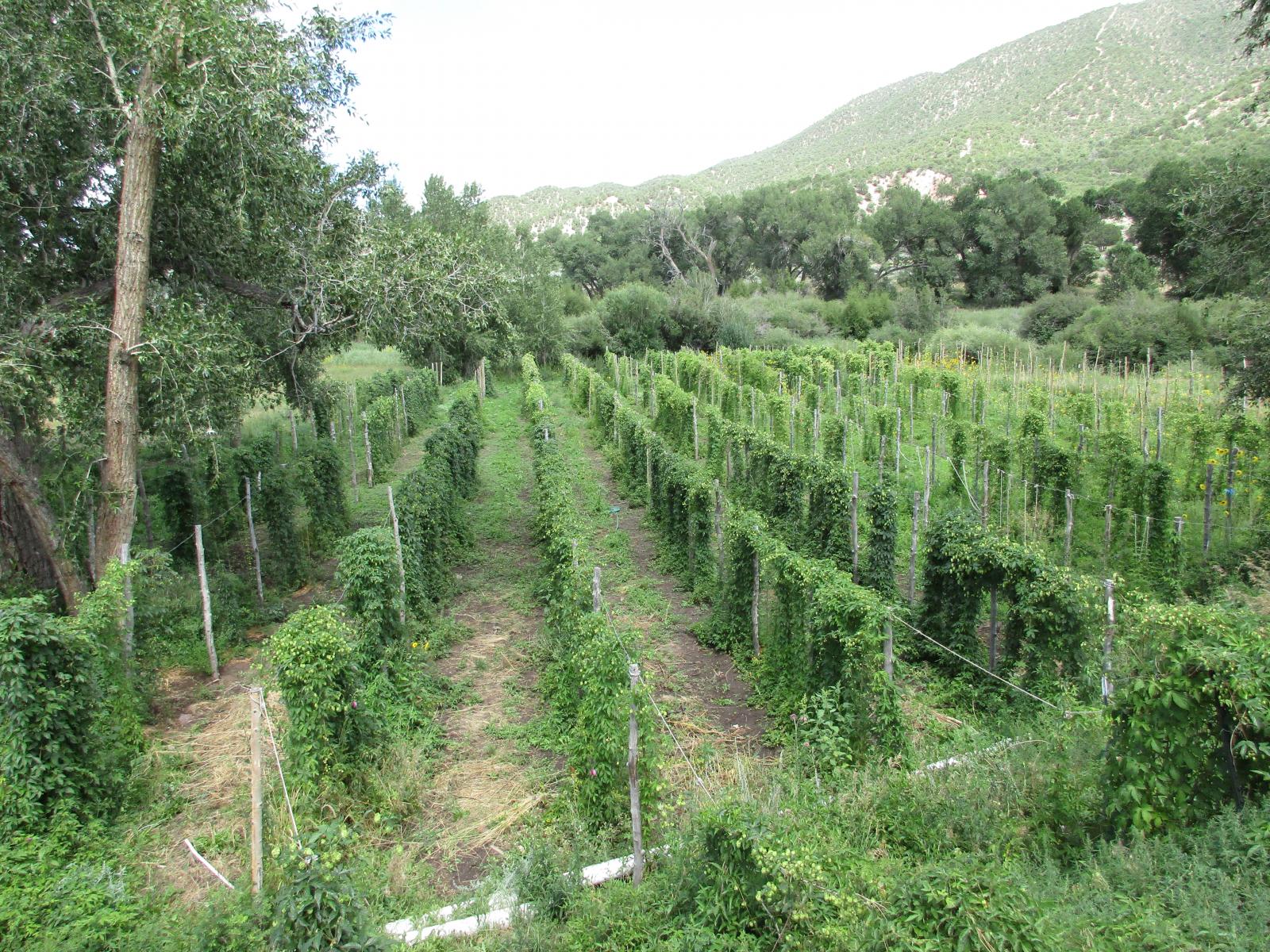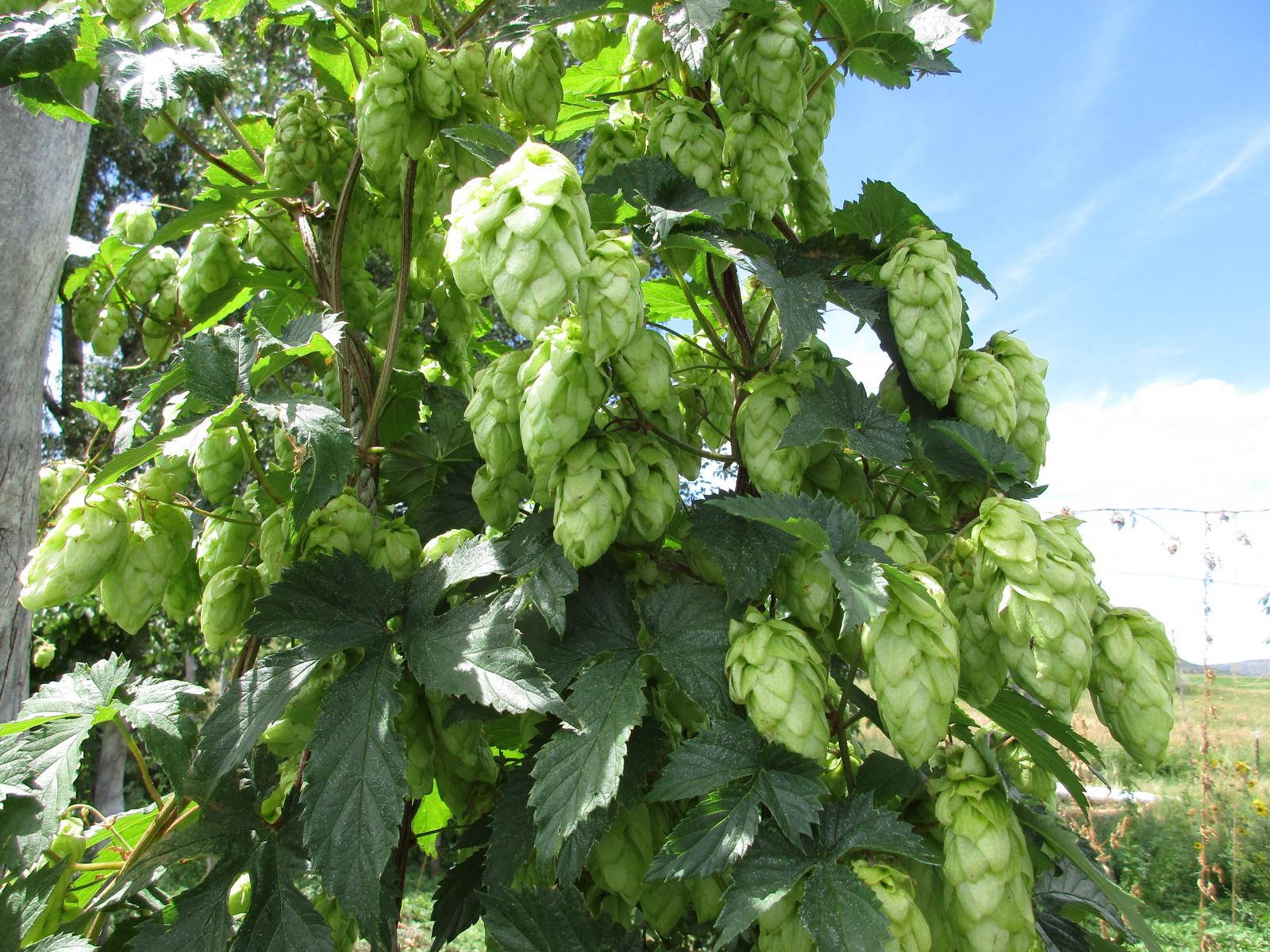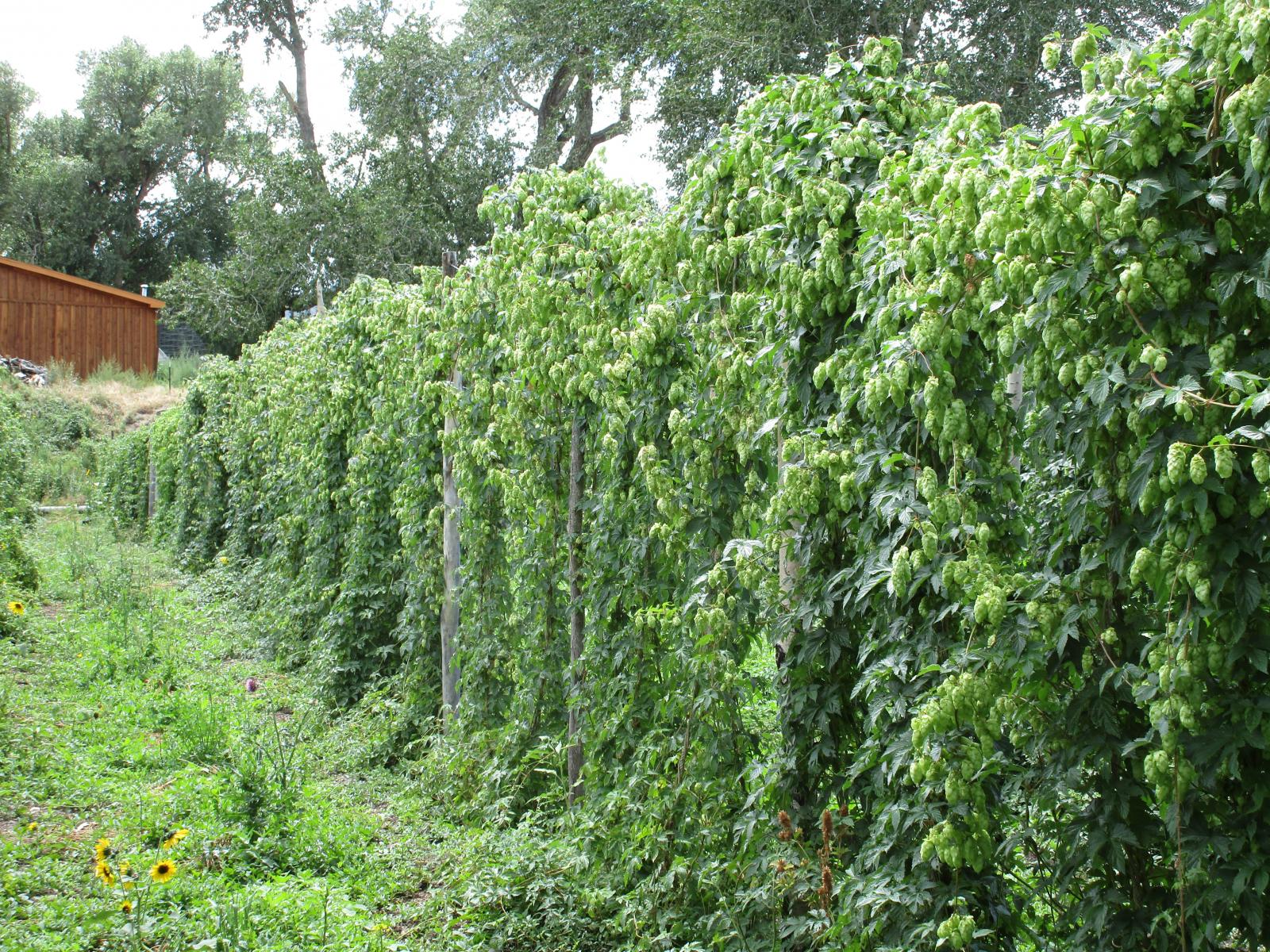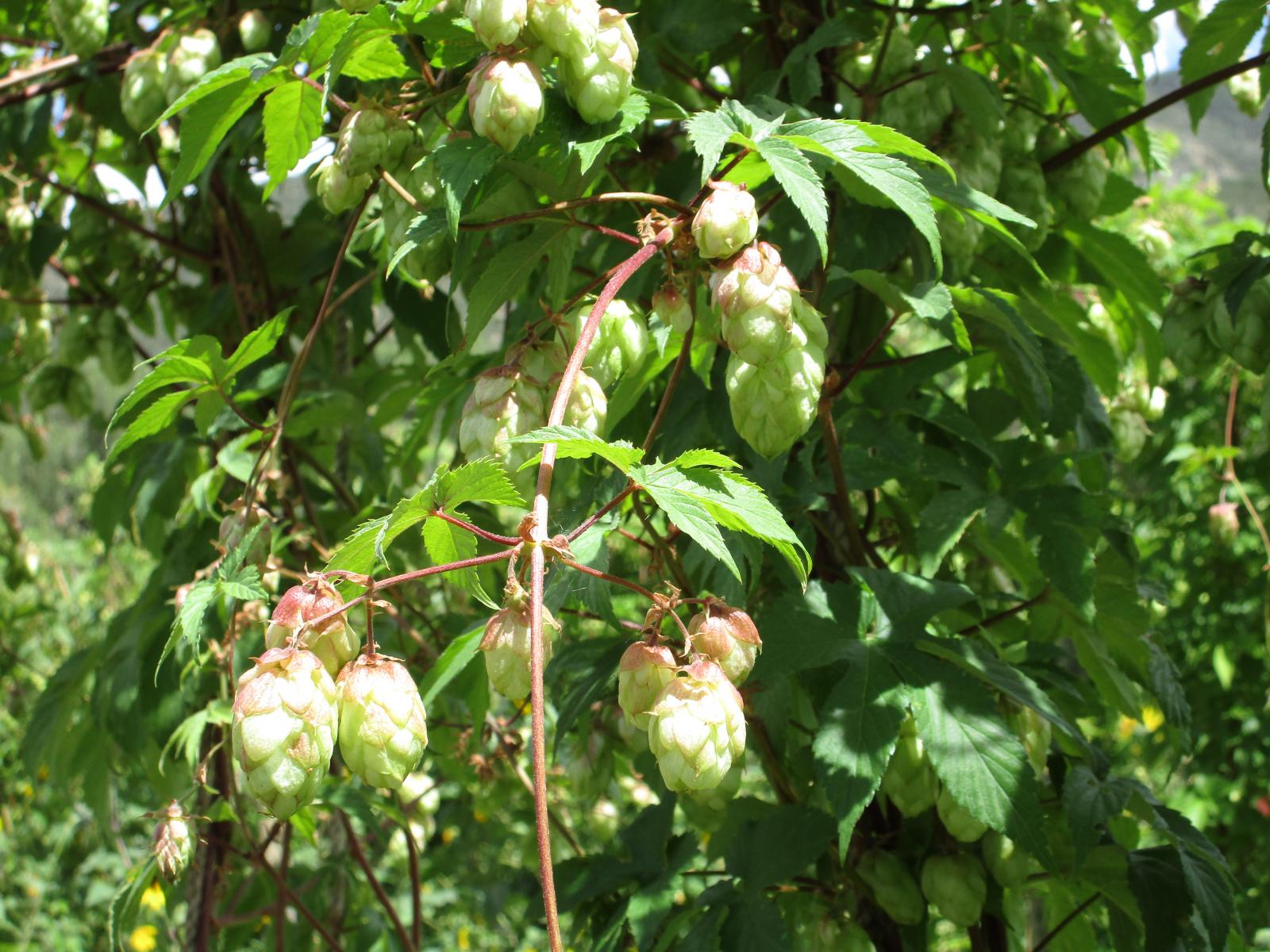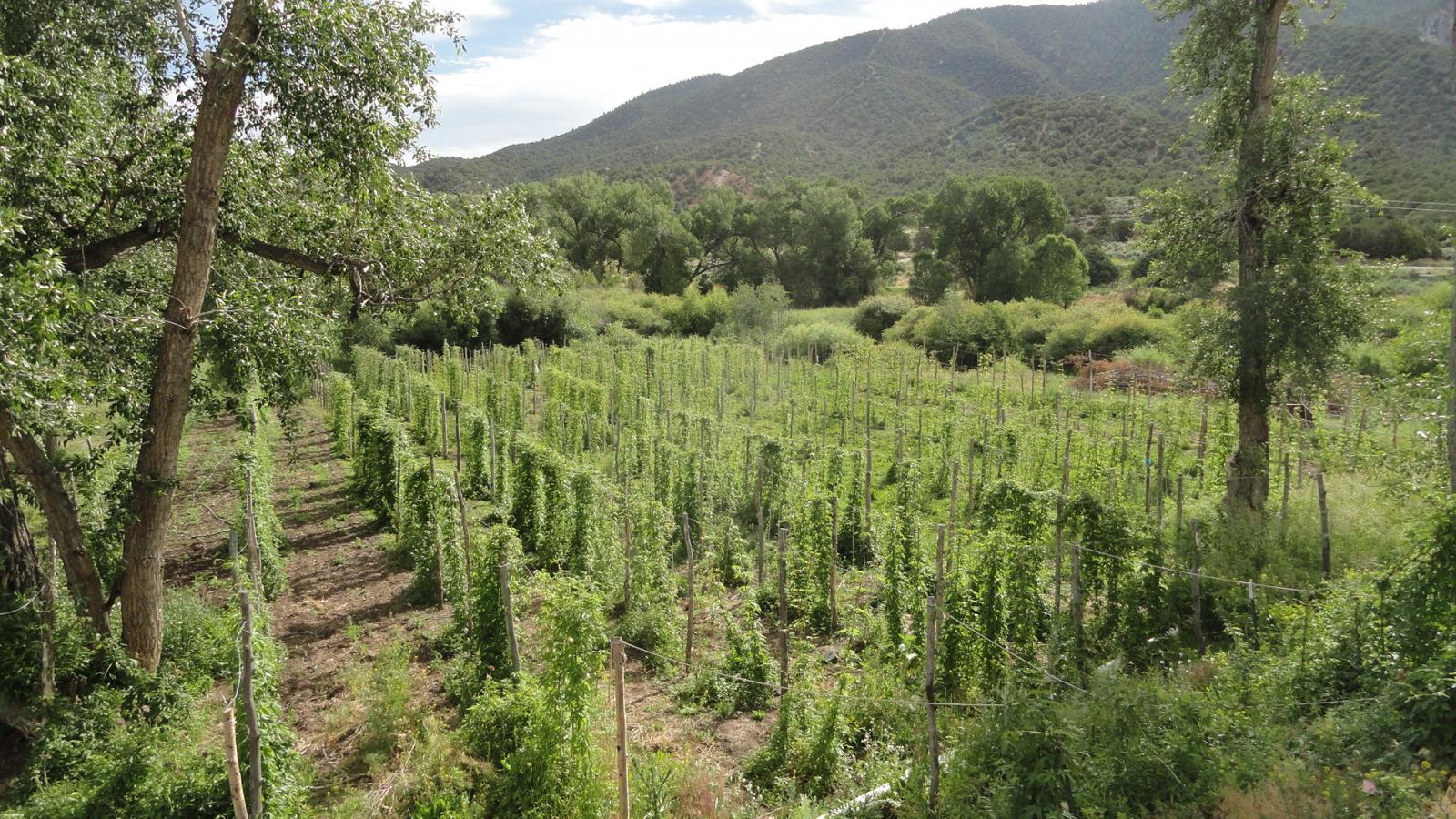Gulf Coast Neomex update
View attachment 392797
Multihead aka The Beast (this was last week, already a second shoot this tall)
View attachment 392798
Willow Creek got a later start than Multihead last year, I'll be interested to see how it's growth and cones differ from Multihead.
The Multihead grows quite different from cascade, NB, and Saaz. Have not gotten any of the dual cones that gave it the name, but it seems very "bushy" and vigorous, like a hydra, sending out way more bines that the others. The cones are long and thin, seem to ripen much quicker than the plump Cascade ones. With cascade I know I have time to harvest when it opens up, and I can see the yellow lupulin, wait for it to be dry and crinkle-y. Since the Multihead seems more torpedo-shaped, don't open up like cascade, it's harder to tell when they are going to stop growing, and they seemed to turn brown and overripe quicker than cascade. It didn't produce a ton, or many big cones, but I'm hopeful this year will be better in that regard.
The ripe Multihead smelled very pleasant, like juicyfruit gum and ripe figs, and intense. You could smell it when you were within a few feet of the bine, without rubbing a cone in your hands. Waaay different from the distinct grapefruit-floral-citrus of the cascade.
For first year growers in southern latitude, watch those Multiheads, mine kept producing a few cones until late December
















































![Craft A Brew - Safale BE-256 Yeast - Fermentis - Belgian Ale Dry Yeast - For Belgian & Strong Ales - Ingredients for Home Brewing - Beer Making Supplies - [3 Pack]](https://m.media-amazon.com/images/I/51bcKEwQmWL._SL500_.jpg)








